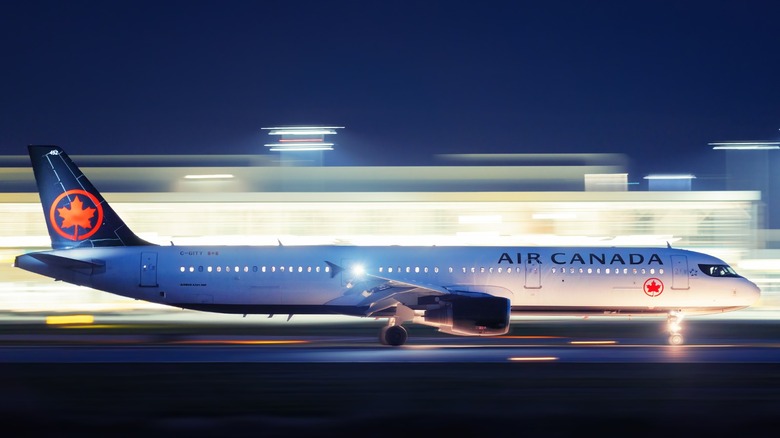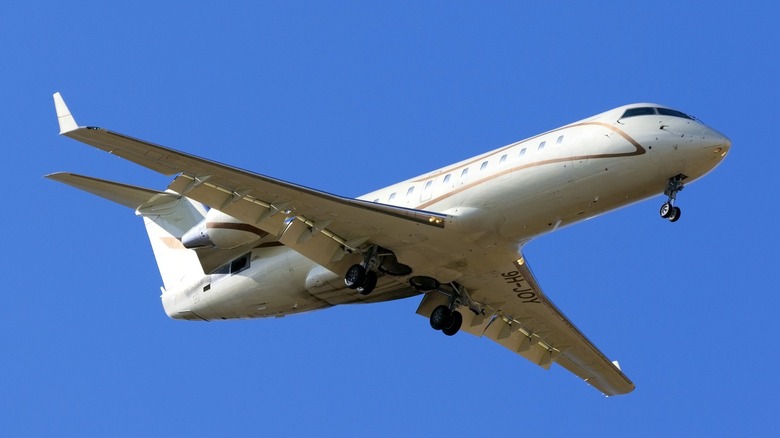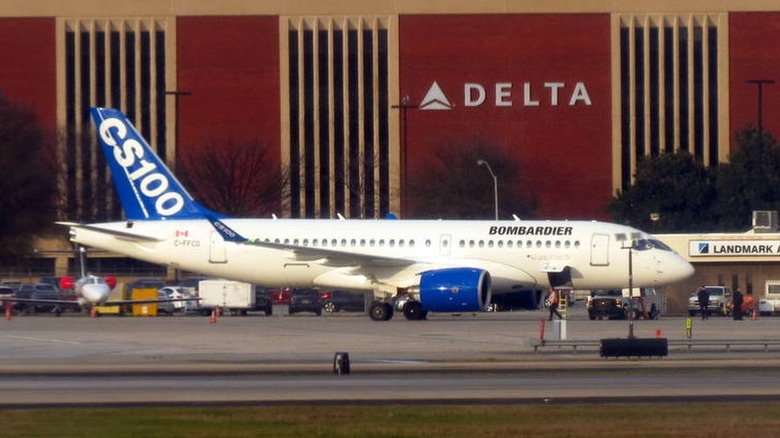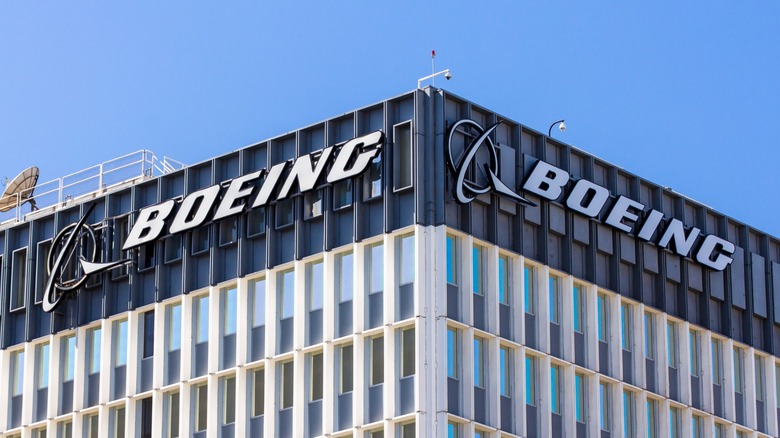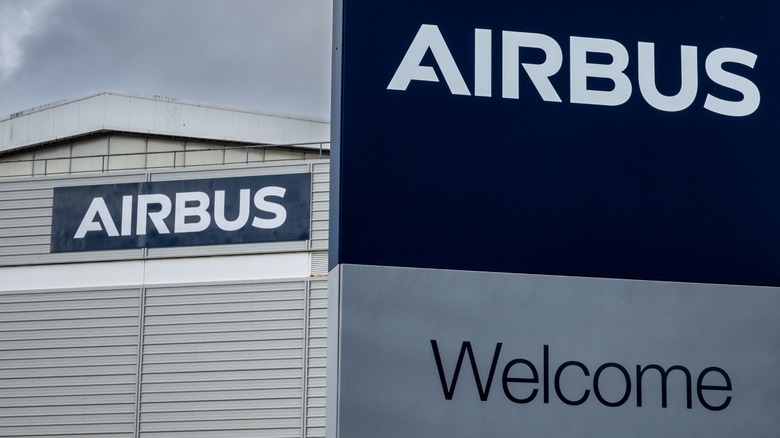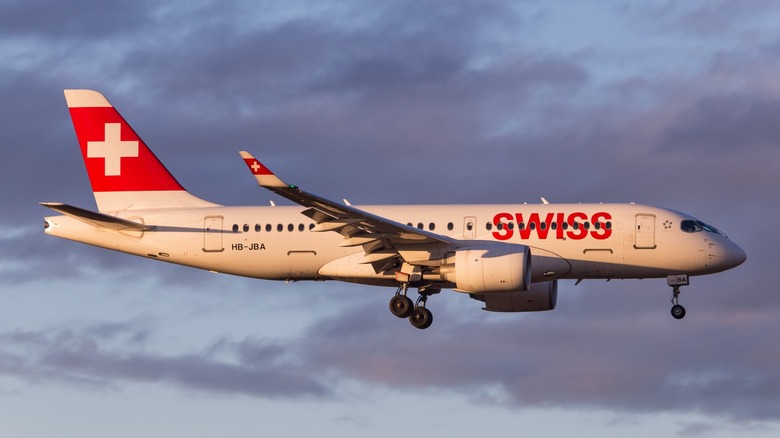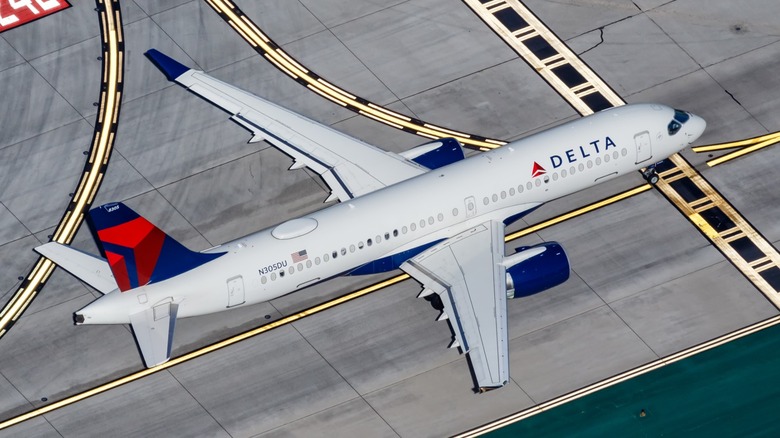Everything You Need To Know About The Airbus A220
The Airbus A220 is a single-aisle airliner designed to replace aging single-aisle jets like the DC9, MD80, and even the second-generation Boeing 737s. While you can be forgiven for thinking that the A220 is a smaller version of the venerable Airbus A320, which was designed and developed at Airbus headquarters in Toulouse, France, this cannot be further from the truth.
The A220 has a storied and exciting past, starting all the way back in 1996. But this aircraft wasn't born in Europe. Instead, the idea for this narrow-body airliner began in Canada as the larger brother of another popular regional jet.
So, how did the Airbus A220 come to be, and what was it called before Airbus acquired it? Also, why did Airbus buy the A220 design in the first place? Let's dive into the history of Airbus' newest clean-sheet airframe and see how it became the popular airliner it is today.
A bigger regional jet
In the 1990s, Bombardier, one of the best private jet makers globally, built the CRJ regional jet. As the demand grew for bigger variants of this 50-seater jet, the company considered buying the ailing Fokker aircraft company, the maker of the 85 to 109-seat Fokker 100 and several iconic World War 1 fighters. However, talks fell through, and Fokker declared bankruptcy soon after.
Nevertheless, Bombardier still wanted a bigger regional airliner, eventually launching the BRJ-X program or the Bombardier Regional Jet Expansion. This proposed airframe will sit between the small CRJ100/200 regional jets and the larger Airbus A318s and Boeing 737-500s.
However, instead of creating an all-new design, Bombardier expanded the CRJ100/200 into the larger CRJ700 family. This allowed the company to deliver a larger plane into the market faster, as a clean-sheet design could take as much as seven to eight years from conception to delivery.
Despite the success of the CRJ series of regional jets, Bombardier knew it needed to create an all-new design that would feature modern design and avionics and fly more efficiently than the competition.
The Bombardier C Series
In 2004, Bombardier began the feasibility study for a 110+-seater aircraft with a two-by-three-seat configuration and a range of about 3,200 nautical miles. After four years, this study officially became the C Series family.
Bombardier's C Series targets the 100 to 150-seat airliner, which Rob Dewar, one of the pioneer engineers who worked on the aircraft, describes as being 'abandoned by other OEMs' like Airbus and Boeing. The C Series came in two variants: the smaller 135-seat CS100 and the larger 160-seat CS300.
The C Series first flew in 2013 and gained interest from the Lufthansa Group. The company eventually ordered 60 examples of Bombardier's latest jet, with the first one entering service with Swiss International Air Lines, a Lufthansa Group subsidiary, in 2016.
However, the C Series received its most significant success in 2016, when Delta ordered 75 CS100s with an option for 50 more airframes. This purchase will make the American airline the biggest operator of the type. However, this didn't sit well with a particular airplane manufacturer from Seattle.
[ Featured image by redlegsfan21 via Wikimedia Commons | Cropped and scaled | CC BY-SA 2.0 ]
Boeing's challenge
The Boeing 717 was the smallest airliner in its lineup and was the best aircraft to compete with the Bombardier C Series. However, Boeing canceled it in 2006 — 10 years before Delta ordered the CS100s. Even though it didn't have a direct competitor to the CS100, Boeing still complained to the US Department of Commerce (DoC) that Bombardier sold the C Series below cost to Delta.
The DoC responded to this by imposing a 299.45% tariff on each airliner, thereby tripling its price. This made the C Series an impractical purchase for Delta, making it too expensive for its needs. However, the US International Trade Commission (ITC) ruled in 2018 that the C Series does not negatively affect the US aviation industry, reversing the proposed tariffs on Bombardier.
Although this was a win for Bombardier and the C Series, the company already had a precarious financial situation even before the Boeing challenge, and the roadblock it faced with Boeing only served to exacerbate the problem.
The Airbus takeover
Bombardier's problems in the U.S meant that it would have issues selling the C Series jet in one of the biggest airliner markets in the world. So, to help the company stay afloat, Bombardier sold 50.01% of the C Series program to Airbus for CAD$1.
This joint venture eventually became the Airbus Canada Limited Partnership and effectively made the C Series an Airbus product, with the plane rebranded as the A220. It also allowed the aircraft to be built in Airbus' Mobile, Alabama facility. So, even if the US ITC ruled in favor of Boeing, Airbus could argue that the A220 is made in the U.S. and, thus, not subject to the nearly 300% import tax the DoC set when it was still made in Canada.
As the ITC nullified the DoC's tariffs on the C Series (now A220), airlines no longer needed to fear paying 200% more than the jet's list price. And given that the A220 is now under Airbus' wing, it attracted many more customers who were confident of the company's ability to deliver their orders and support their future A220 fleets.
Because of this, the program needed more investment to expand production. However, Bombardier did not have the resources to deliver this funding. So, in 2020, Bombardier sold the rest of its stake to Airbus, thus altogether leaving the commercial airliner market.
Current A220 operators
The A220 became a successful small airliner for Airbus. When it was still under Bombardier's care, the company secured 60 firm orders from the Lufthansa Group, 10 firm orders from Korean Air, 45 from Air Canada, 75 from Delta, and 12 from Egyptair. This totals 212 firm orders, with several more options.
After Airbus acquired the program, the A220 family received over 700 more orders as of February 2024. Airbus lists 102 orders for the A220-100, with 59 units delivered, and 812 for the larger -300 model, with 263 delivered.
Delta Airlines is still the largest operator of the A220-100, with 45 airframes currently flying, and Swiss International Airlines a far second, with just nine flying examples. On the other hand, Air Baltic presently has 47 A220-300s in its fleet, with Air Canada boasting 33. Nevertheless, both Delta and JetBlue have ordered 100 A220-300s, thus making them the largest operators once their orders are completed.
These are the biggest operators of the Airbus A220 series: Delta with 69 (45 -100s and 24 -300s), Air Baltic with 47 (all -300s), Air Canada with 33 (all -300s), Air France with 32 (all -300s), and Swiss with 30 (nine -100s and 21 -300s). But if we count the total orders, these airlines will be the largest A220 operators as of February 2024: Delta (145), JetBlue (100), Breeze (90), Air Lease Corporation (75), and Lufthansa (40).
The future of the A220
The A220 has become a successful Airbus aircraft, having received more than 900 orders in the six years since it entered production. Although it still cannot match the 18,460 orders of the Airbus A320 family, this aircraft launched in 1981 — more than 43 years ago.
However, Airbus is ramping up production of the A220 from six airframes per month to 14 by 2026. It also plans to reduce overall production and operational costs, making the A220 an even more economical model for airlines worldwide. Aside from lower costs, Airbus also aims to reduce the aircraft's carbon footprint by introducing more efficient engines and reducing fuel burn to minimize the plane's environmental impact.
There have also been rumblings of a larger A220-500 or A221 model, but we haven't received official news from Airbus yet about any of these developments. After all, a larger A220 could potentially cannibalize the sales of the smaller A319, which could seat around the same number of passengers. However, given that the A220 is a much more modern design than the A320 family, it might just make sense for Airbus to develop the A220 further and let it reach its maximum range and capacity potential.
